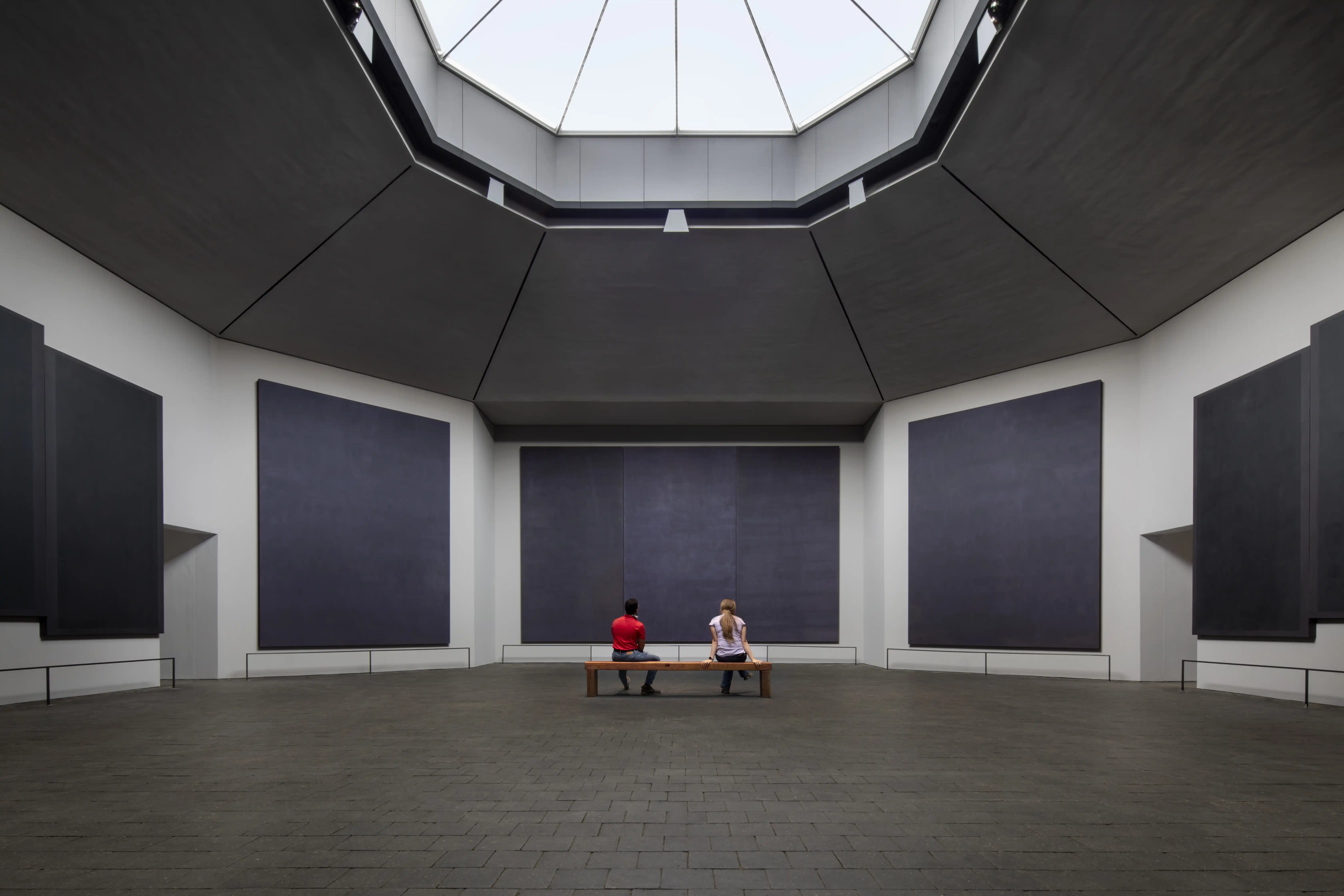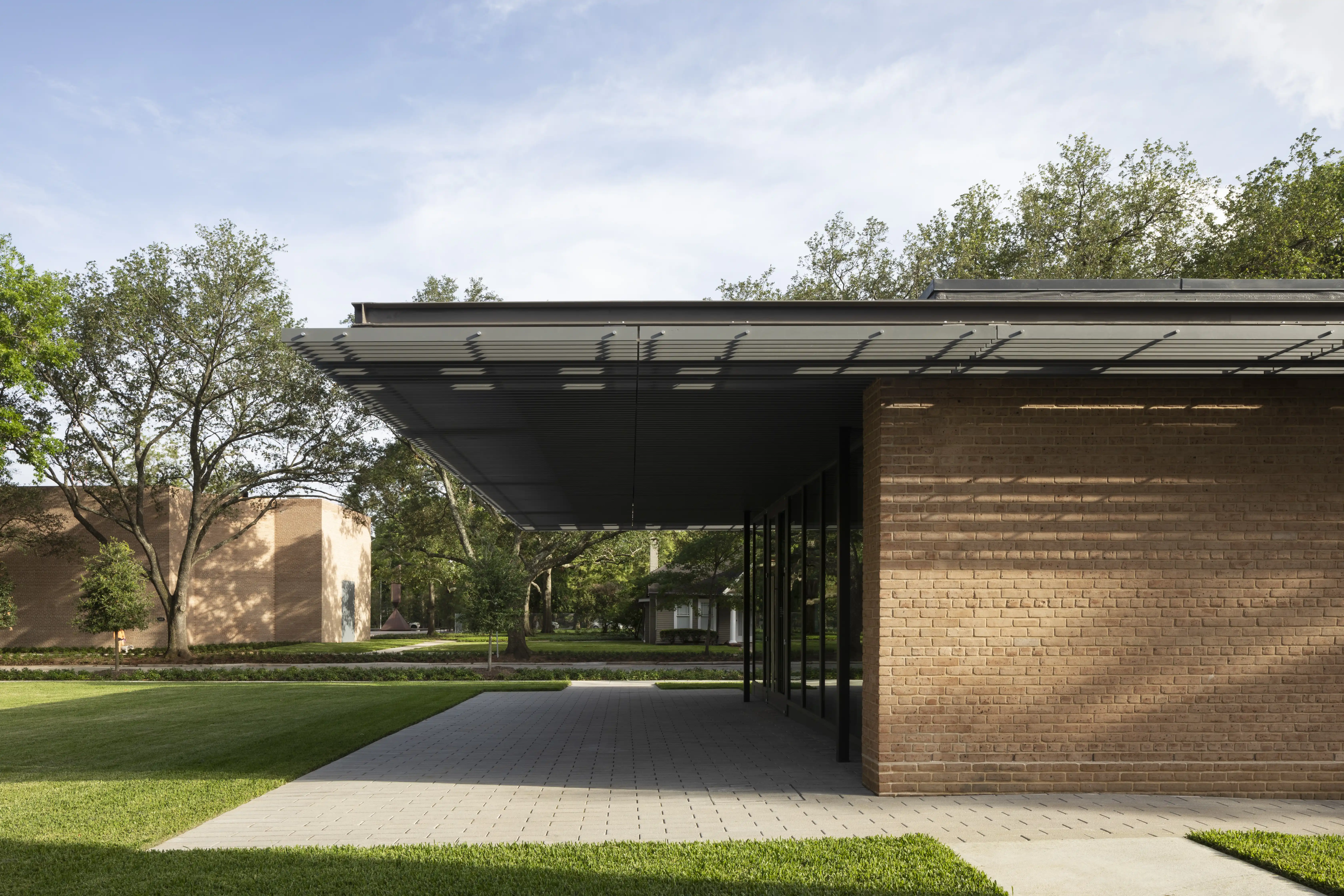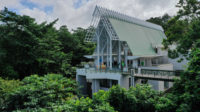The Rothko Chapel in Houston has announced an indefinite closure after the National Register of Historic Places–listed structure suffered water damage from Hurricane Beryl. The tropical hurricane, the earliest forming Category 5 storm on record in the Atlantic basin, swept through the Texas Gulf Coast in early July—widespread flooding caused extensive damage to buildings and infrastructure, and resulted in 36 fatalities.

The chapel's central meditative space is hung with 14 monumental paintings by Mark Rothko. Photo © Elizabeth Felicella
The non-denominational chapel, which houses 14 paintings by Mark Rothko, reported significant water damage to its ceiling and walls, with three of the Rothko works affected to varying degrees. “We are deeply saddened by the impact of the hurricane on the chapel and across Houston,” said David Leslie, executive director of the independent institution that owns the Rothko Chapel, in a statement. “The closure will ensure that the necessary repairs and restorations can be made as effectively and completely as required.”

The Rothko Chapel plaza features Barnett Newman’s Broken Obelisk (1967), a sculpture dedicated to Dr. Martin Luther King Jr. Photo © Elizabeth Felicella
The project was conceived in 1964, when Houston art collectors and philanthropists John and Dominique de Menil commissioned abstract artist Mark Rothko to create a series of paintings for a multifaith—initially, Catholic—spiritual center. Philip Johnson was originally attached to the project but left in 1967 following conflicts with Rothko, who was given creative control over the chapel’s design. Johnson was replaced by Howard Barnstone, and then Eugene Aubry, who completed the project in 1971. Rothko created large-scale paintings for the building’s central meditative space, all in varying shades of black, between 1964 and his death by suicide in 1971—just days before the chapel’s opening.
The building, a small octagonal structure with gray and pink stucco walls, has undergone two major renovations since its inauguration. A $1.8 million renovation was completed in 2000, and in 2016, the chapel commenced work on a more extensive $16 million overhaul. The most recent renovation, completed in 2020, was overseen by Architecture Research Office (ARO) with Nelson Byrd Woltz Landscape Architects and included a complete replacement of the central skylight and the development of a new masterplan for the chapel’s 2-acre campus.

ARO's Suzanne Deal Booth Welcome House, completed in 2020, will remain open to the public during the Chapel's closure. Photo © Elizabeth Felicella
The Chapel has engaged a local art preservation firm to assess the affected Rothko panels, with the full cost of repairs and the extent of the damage still being determined. While the building is still being assessed, a representative told RECORD that repairs can likely be done by a contractor, and ARO is not as of yet involved with the reconstruction process. The ARO-designed visitor’s center, the Suzanne Deal Booth Welcome House, will remain operational during the Chapel’s closure





